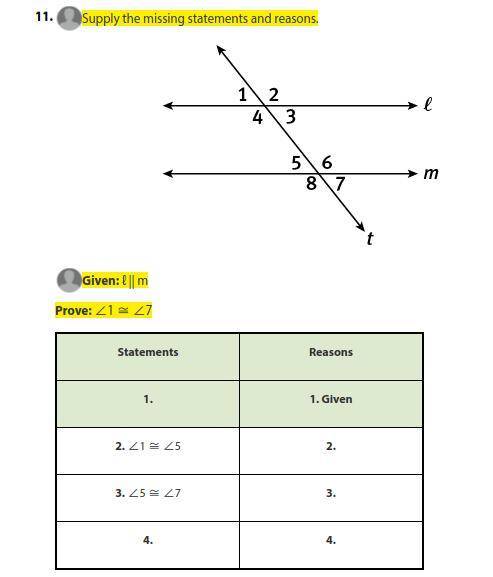
Mathematics, 24.10.2020 04:00, hosfordkenya4
DUE TODAY Springboard Practice 7 Question 11 USING THESE PROOFS
Reflexive Property of Equality For all real numbers a, a = a.
Symmetric Property of Equality For all real numbers a and b, if a = b, then b = a.
Transitive Property of Equality For all real numbers a, b, and c, if a = b and b = c, then a = c.
Substitution Property of Equality For all real numbers a and b, if a = b, then a may be replaced by b.
Additive Identity For all real numbers a, a + 0 = 0 + a = a.
Multiplicative Identity For all real numbers a, a ⋅ 1 = 1⋅ a = a.
Commutative Property of
Addition
For all real numbers a and b, a + b = b + a.
Commutative Property of
Multiplication
For all real numbers a and b, a ⋅ b = b ⋅ a.
Associative Property of Addition For all real numbers a, b, and c, (a + b) + c = a + (b + c).
Associative Property of
Multiplication
For all real numbers a, b, and c, (a ⋅ b) ⋅ c = a ⋅ (b ⋅ c).
Distributive Property of
Multiplication over Addition
For all real numbers a, b, and c, a(b + c) = a ⋅ b + a ⋅ c.
Additive Inverse For all real numbers a, there is exactly one real number -a
such that a + (-a) = 0 and (-a) + a = 0.
Multiplicative Inverse For all real numbers a and b where a ≠0, b ≠ 0, there is exactly
one number b
a
such that b
a
a
b⋅ = 1 and a
b
b
a⋅ = 1.
Multiplication Property of Zero For all real numbers a, a ⋅ 0 = 0 and 0 ⋅ a = 0.
Addition Property of Equality For all real numbers a, b, and c, if a = b, then a + c = b + c.
Subtraction Property of Equality For all real numbers a, b, and c, if a = b, then a − c = b − c.
Multiplication Property of
Equality
For all real numbers a, b, and c, if a = b, then a ⋅ c = b ⋅ c.
Division Property of Equality For all real numbers a, b, and c, c ≠ 0 if a = b, then a
c
b
c = .
Zero Product Property of Equality For all real numbers a and b, if a ⋅ b = 0 then a = 0 or b = 0 or
both a and b equal 0.
Addition Property of Inequality* For all real numbers a, b, and c, if a > b, then a + c > b + c.
Subtraction Property of
Inequality*
For all real numbers a, b, and c, if a > b, then a − c > b − c.
Multiplication Property of
Inequality *
For all real numbers a, b, and c, c > 0, if a > b, then a ⋅ c > b ⋅ c.
For all real numbers a, b, and c, c b, then a ⋅ c 0 if a > b, then a
c
b
c
> .
For all real numbers a, b, and c, c b, then a
c
b
c
< .


Answers: 3
Other questions on the subject: Mathematics

Mathematics, 21.06.2019 20:00, claudia3776
What does the sign of the slope tell you about a line?
Answers: 2

Mathematics, 21.06.2019 23:30, jailinealvarado24
Simplify. 3(4+4x) (type your answer in with no spaces)
Answers: 1

Mathematics, 22.06.2019 00:30, steviedude316
Round each of the decimals to the nearest hundredth a. 0.596 b. 4.245 c. 53.6843 d. 17.999
Answers: 2

Mathematics, 22.06.2019 02:30, QueenNerdy889
Which statement best explains whether the table represents a linear or nonlinear function? input (x) output (y) 2 5 4 10 6 15 8 20 it is a linear function because the input values are increasing. it is a nonlinear function because the output values are increasing. it is a linear function because there is a constant rate of change in both the input and output. it is a nonlinear function because there is a constant rate of change in both the input and output.
Answers: 3
Do you know the correct answer?
DUE TODAY Springboard Practice 7 Question 11 USING THESE PROOFS
Reflexive Property of Equality For...
Questions in other subjects:

Chemistry, 20.01.2021 01:20



English, 20.01.2021 01:20






Mathematics, 20.01.2021 01:20






